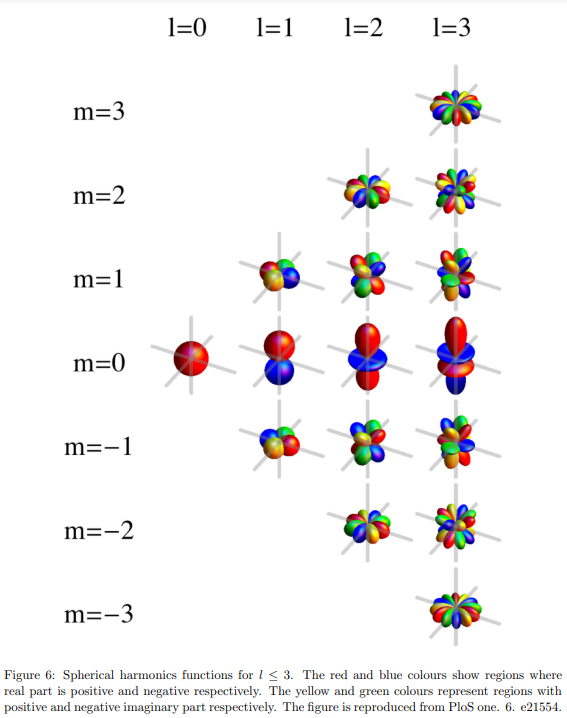PX262 - E2 - eigenvalues and eigenfunctions
- using spherical coordinates:
- the angular momentum operator:
- the angular momentum squared operator can be expressed using the vector identity:
- to solve the eigenvalues equations:
- using separation of variables:
- taking the eigenvalue equation for
- the general solution for this equation is:
where is the normalization constant - with
being the angle, the answer should stay the same after a rotation by , ie: - therefore, it is required that
, where is an integer - normalizing the function:
-
therefore, the eigenfunctions have the form:
where the eigenvalues would be:
-
with
-dependence fixed, looking at
- substituting
can be rewritten as - solving explicitly for
, looking at the solution in the form:
- following the same logic as for the harmonic oscillator, substituting
into the differential equation will lead to a recursive relation between coefficients - it will be found that the expansion diverges at
, so, the coefficients after some value of must be cut off - this can be done by setting:
where, is a positive integer - the functions,
, are well known polynomials, legendre polynomials - the first few legendre polynomials are:
-
functions for
follow the same steps, but the maths is quite complicated, hence the details are skipped -
the solutions in terms of
are given by functions:
- if
, the derivative will be zero, and the whole wavefunction will be zero over all space, which is physically unrealistic - therefore the values of
are restricted by the condition:
-
the eigenfunctions of
and are: where,
is purely a convention -
the functions,
, are called spherical harmonics -
the factor in the brackets is the normalization factor such that:
-
these functions are orthogonal and form a complete set, so any general wavefunction can be written as a linear combination of
-
the eigenvalue equations are:
and are often used as quantum numbers to label states, referred to as orbital and magnetic quantum numbers respectively - spherical harmonics for
- for two neighbouring states with the same
, , is constant - another analogue of ladder operators can be defined for angular momentum operator as:

image: Q. Wang, K. Birod, C. Angioni, et al. PLoS ONE 6(7): e21554. https://doi.org/10.1371/journal.pone.0021554